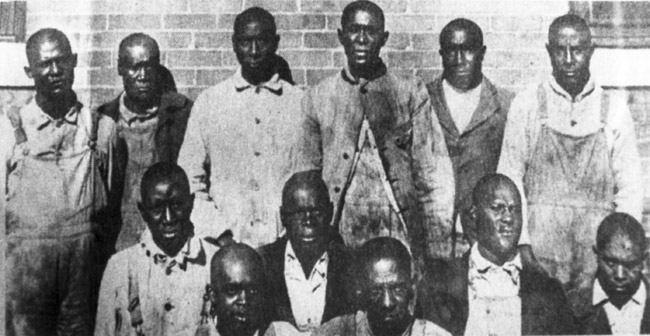Over a century ago, on September 30th, 1919, a group of African American sharecroppers gathered in Elaine, Arkansas, in the Mississippi River’s fertile delta. These sharecroppers, only a generation or two beyond the end of slavery, were organizing for a fair share of the income from the crops they grew. White vigilantes, resenting this resistance by Black farmers against the destitution imposed on them, attacked the meeting. Shots were fired, and a white man was killed. What followed became known as the Elaine Massacre.
Hundreds of African Americans in Elaine were slaughtered by the white mob, likely aided by law enforcement and federal troops. Historians estimate the number killed at no less than two hundred Black residents – men, women and children. No white participants were ever held accountable.
It was not the first time racists terrorized Elaine’s Black population. In 1916, Silas Hoskins was lynched there. Hoskins was a prosperous owner of a saloon for African American clientele. Whites who coveted his business repeatedly threatened his life. One night, he didn’t return from work. He’d been lynched. His nine-year-old nephew, staying with them at the time, was Richard Wright, who would become one of the most influential writers of the 20th century. Wright captured the Black experience in his writing, most famously in the novel “Native Son” and in his memoir, “Black Boy”.
In “Black Boy,” Richard Wright described the aftermath of his uncle Silas Hoskins’ murder:
“There was no funeral. There was no music. There was no period of mourning. There were no flowers. There were only silence, quiet weeping, whispers, and fear. I did not know when or where Uncle Hoskins was buried. Aunt Maggie was not even allowed to see his body nor was she able to claim any of his assets. Uncle Hoskins had simply been plucked from our midst and we, figuratively, had fallen on our faces to avoid looking into that white-hot face of terror that we knew loomed somewhere above us. This was as close as white terror had ever come to me and my mind reeled. Why had we not fought back, I asked my mother and the fear that was in her made her slap me into silence.”
Wright was forced to flee with his family.
Then came the Elaine Massacre. University of Florida history professor Paul Ortiz put the 1919 massacre into context, speaking on the Democracy Now! news hour:
“The price of cotton was increasing. Most importantly, African Americans were making major gains as landowners in places like Elaine, in places like the Black Belt of Alabama, in northern Florida, all across the South…Because of these gains and because of the role that African Americans played in World War I, their expectations were rising. The white power structure mobilized against these rising aspirations.”
Twelve African American men were tried in the wake of the massacre. An all-white jury convicted them after only minutes of deliberation, sentencing them to death. The pioneering African American journalist Ida B. Wells traveled to Elaine, embracing and reporting on their struggle. The condemned men appealed, arguing that their 14th Amendment rights to due process had been violated. The U.S. Supreme Court agreed in 1923 in the case of Moore v. Dempsey, securing expanded protections for Southern Black defendants with mob-dominated trials and juries. The case set a vital precedent, leading to some of the landmark legal victories of the civil rights era in the decades that followed.
Richard Wright’s daughter, the poet Julia Wright, who describes her great uncle Silas’ murder in 1916 as “the Black canary in the coal mine,” said on Democracy Now!, “Silas Hoskins weighed on my father throughout his life. The lynching of Silas Hoskins is a thread, a burning red thread, that can be drawn through practically all his works.”
Earlier this year, soil was gathered from where Silas Hoskins is believed to have been lynched. Two jars of the soil were carried from Elaine to Montgomery, Alabama, for display at the Equal Justice Initiative’s Community Remembrance Project, where over 800 similar jars gathered at lynching sites memorialize the epidemic of lynchings that plagued this country for so long. The jars are housed in Montgomery’s Legacy Museum, which powerfully depicts the transition from enslavement to mass incarceration as key tools used to oppress African Americans. Founded by anti-death penalty activist and defense attorney Bryan Stevenson, EJI also maintains the deeply moving National Memorial for Peace and Justice, a sweeping outdoor installation commemorating the thousands of U.S. lynching victims.
The Elaine Museum and Richard Wright Civil Rights Center is being built in Elaine, Arkansas, to preserve the memory of this terrible massacre, and to continue the struggles for equality that surrounded it. Let this moment expand the national discussion on race and reparations.
This column originally appeared on Democracy Now!




